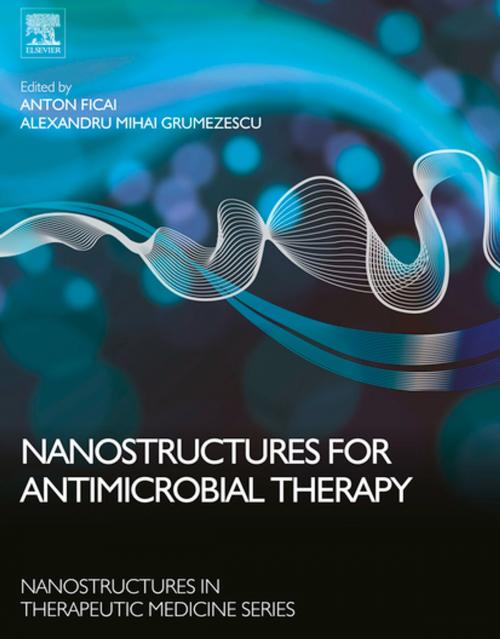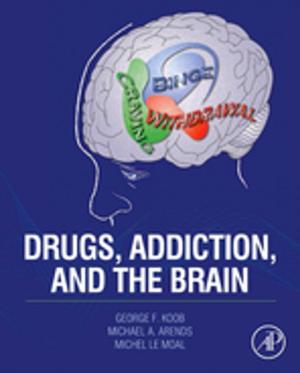Nanostructures for Antimicrobial Therapy
Nonfiction, Science & Nature, Science, Chemistry, Physical & Theoretical, Technology, Material Science, Health & Well Being, Medical| Author: | ISBN: | 9780323461511 | |
| Publisher: | Elsevier Science | Publication: | May 29, 2017 |
| Imprint: | Elsevier | Language: | English |
| Author: | |
| ISBN: | 9780323461511 |
| Publisher: | Elsevier Science |
| Publication: | May 29, 2017 |
| Imprint: | Elsevier |
| Language: | English |
Nanostructures for Antimicrobial Therapy discusses the pros and cons of the use of nanostructured materials in the prevention and eradication of infections, highlighting the efficient microbicidal effect of nanoparticles against antibiotic-resistant pathogens and biofilms.
Conventional antibiotics are becoming ineffective towards microorganisms due to their widespread and often inappropriate use. As a result, the development of antibiotic resistance in microorganisms is increasingly being reported. New approaches are needed to confront the rising issues related to infectious diseases. The merging of biomaterials, such as chitosan, carrageenan, gelatin, poly (lactic-co-glycolic acid) with nanotechnology provides a promising platform for antimicrobial therapy as it provides a controlled way to target cells and induce the desired response without the adverse effects common to many traditional treatments.
Nanoparticles represent one of the most promising therapeutic treatments to the problem caused by infectious micro-organisms resistant to traditional therapies. This volume discusses this promise in detail, and also discusses what challenges the greater use of nanoparticles might pose to medical professionals. The unique physiochemical properties of nanoparticles, combined with their growth inhibitory capacity against microbes has led to the upsurge in the research on nanoparticles as antimicrobials. The importance of bactericidal nanobiomaterials study will likely increase as development of resistant strains of bacteria against most potent antibiotics continues.
- Shows how nanoantibiotics can be used to more effectively treat disease
- Discusses the advantages and issues of a variety of different nanoantibiotics, enabling medics to select which best meets their needs
- Provides a cogent summary of recent developments in this field, allowing readers to quickly familiarize themselves with this topic area
Nanostructures for Antimicrobial Therapy discusses the pros and cons of the use of nanostructured materials in the prevention and eradication of infections, highlighting the efficient microbicidal effect of nanoparticles against antibiotic-resistant pathogens and biofilms.
Conventional antibiotics are becoming ineffective towards microorganisms due to their widespread and often inappropriate use. As a result, the development of antibiotic resistance in microorganisms is increasingly being reported. New approaches are needed to confront the rising issues related to infectious diseases. The merging of biomaterials, such as chitosan, carrageenan, gelatin, poly (lactic-co-glycolic acid) with nanotechnology provides a promising platform for antimicrobial therapy as it provides a controlled way to target cells and induce the desired response without the adverse effects common to many traditional treatments.
Nanoparticles represent one of the most promising therapeutic treatments to the problem caused by infectious micro-organisms resistant to traditional therapies. This volume discusses this promise in detail, and also discusses what challenges the greater use of nanoparticles might pose to medical professionals. The unique physiochemical properties of nanoparticles, combined with their growth inhibitory capacity against microbes has led to the upsurge in the research on nanoparticles as antimicrobials. The importance of bactericidal nanobiomaterials study will likely increase as development of resistant strains of bacteria against most potent antibiotics continues.
- Shows how nanoantibiotics can be used to more effectively treat disease
- Discusses the advantages and issues of a variety of different nanoantibiotics, enabling medics to select which best meets their needs
- Provides a cogent summary of recent developments in this field, allowing readers to quickly familiarize themselves with this topic area















